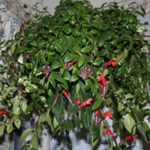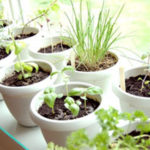Wardian Cases
If you’d like a terrarium, but want something a little more decorative than a bottle or fish tank, try a Wardian case. These small stylized greenhouses make an attractive addition to any interior. Crafted of metal, wood and glass, they come in a variety of sizes. Many indoor plants thrive in the Wardian case environment of constant humidity and stable temperatures.
Nathaniel Ward
Named after their creator, Nathanial Ward, a London surgeon, Wardian cases and terrariums in general were first discovered in 1829. As a child, Ward lived in a polluted area of London and tried, but failed to grow ferns and mosses in his backyard. Abandoning gardening, Ward turned to insects. In a covered glass jar he placed a moth cocoon buried in mold. As he monitored the cocoon, Ward noticed the humidity created within the bottle and was soon astounded to see small grass and ferns growing on the surface of the mold. He experimented further and found that many plants thrive in a miniature greenhouse environment. Wardian cases were eventually used to transport plants by sea and became a popular household item during the Victorian Era.
Photo, Steve Asbell, Plant by Numbers

To have success with a Wardian case or terrarium, keep the following tips in mind.
Plant Selection. Choose plants with similar growing requirements. Slow-growing foliage plants are usually easiest. Avoid fuzzy-leaved plants because their foliage holds too much water and they may rot. Find suitable plants in the nursery or try one of the following vendors: Glasshouse Works http://www.glasshouseworks.com, where they also carry Wardian cases, or Kartuz Greenhouses http://www.kartuz.com
Good terrarium plant choices. include Pilea, moss/club fern (Selaginella), peperomia, various gesneria, Alternanthera ficoidea `Snowball,’ dwarf rhizomatous begonias, Bertolonia maculata and marmorata, miniature creeping fig (Ficus pumila `Quercifolia’ and `Snowflake’), Parlor palm (Chamaedorea elegans), Nerve plant (Fittonia), miniature holly (Malpighia coccigera), baby’s tears (Soleirolia) and Medinilla sedifolia
Preparation. Just about any container will work for a terrarium. Good choices include small aquariums and fish bowls. Before planting, layer ¾-inch crushed gravel on the bottom of the container. Next, sprinkle ½-inch layer of slightly moistened charcoal chips, which prevents odors. Top with 2 to 3 inches of pre-moistened potting soil that contains perlite.
Planting. Building a terrarium is a lot like making a tiny garden. Add visual interest by mounding the soil in some areas. Besides plants, include accessories such as polished stones, marbles, small mirrors and miniature Christmas ornaments, which make great gazing balls. Doll furniture like tables and chairs and miniature garden tools also add a charming touch.
When planting is complete, mist the terrarium a little. If any soil has stuck to the sides, clean it off with a cloth. Keep the top open until there is not condensation on the glass, then cover. Terrariums can be covered with plastic wrap. After a day or two, check the terrarium condensation level. Although you want some, excess can drip onto plants and rot them. Increase air circulation if this becomes a problem.
Lighting. Terrariums require a bright location, but no direct sunlight. Fluorescent lighting also works well.
Watering. With their high humidity, terrariums need very little water. Water only when the top of the soil is dry.
Fertilizing. Fertilizer causes plants to grow, which you don’t want to encourage too much of in such tight quarters. Apply liquid plant food at 1/8th strength every five to six months.
Keep things clean. Prevent fungus build-up and rotting by quickly removing any ailing plants and fallen leaves





